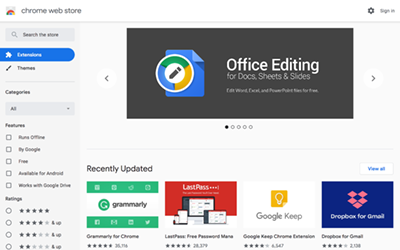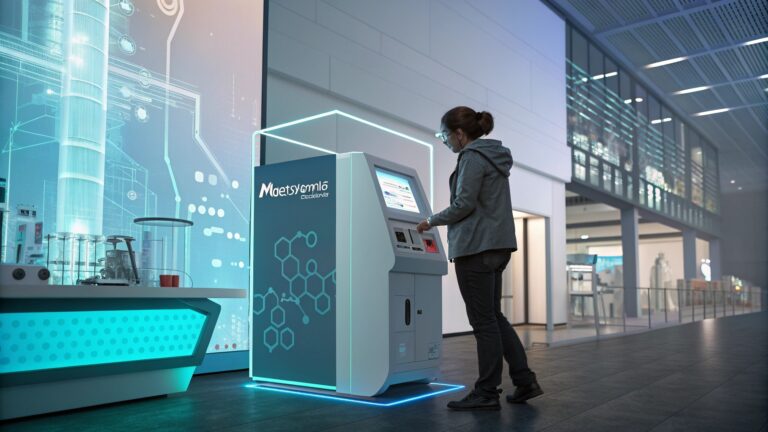The emergence and evolution of web stores represent a pivotal transformation in the retail landscape, fundamentally altering the way consumers shop and businesses operate in the modern era of commerce.
Origins and Early Development
The birth of web stores coincided with the nascent stages of the internet during the 1990s. Groundbreaking platforms like Amazon and eBay pioneered the concept of online marketplaces, introducing consumers to the convenience of shopping from the comfort of their homes.
However, during this era, apprehension among consumers regarding online transactions was rampant. Concerns about cybersecurity, payment security, and the unfamiliarity of the digital shopping experience hindered widespread adoption.
The Evolutionary Phases
1. Technological Advancements:
The evolution of web stores began with pivotal advancements in internet infrastructure. Enhanced security protocols, encryption methods, and improved connectivity laid the groundwork for faster and more secure online transactions.
This bolstered consumer confidence and catalyzed the exponential growth of e-commerce. Additionally, advancements in web design and user interfaces enhanced the overall online shopping experience, making it more intuitive and appealing to a broader audience.
2. Mobile Revolution:
The proliferation of smartphones ushered in a transformative phase for web stores. Websites optimized for mobile devices and the introduction of dedicated shopping apps redefined convenience.
Consumers could now browse, compare products, and make purchases effortlessly while on the move. This marked a paradigm shift, revolutionizing shopping habits and creating unparalleled accessibility.
3. Integration of Advanced Technologies:
The integration of cutting-edge technologies like artificial intelligence (AI) and machine learning marked a significant milestone in the evolution of web stores. These technologies empowered e-commerce platforms to understand consumer preferences better. Personalized product recommendations, predictive analysis, and improved customer service became the cornerstone of enhancing customer satisfaction and engagement.
4. Omnichannel Retailing:
The emergence of omnichannel retailing blurred the boundaries between online and offline shopping experiences. Web stores seamlessly integrated various channels such as websites, physical stores, mobile apps, and social media platforms.
This integration offered consumers a cohesive shopping journey, allowing them to switch between different buying methods effortlessly, fostering a unified consumer experience.
Impact on Retail Landscape
Global Market Reach:
The advent of web stores revolutionized commerce by transcending geographical constraints. It democratized the marketplace, enabling businesses of all sizes and from diverse geographical locations to access a global customer base.
This fundamental shift eliminated the need for extensive physical infrastructure or costly international expansions. Small and medium-sized enterprises gained unprecedented opportunities to compete on a level playing field alongside established brands, leveraging the power of web stores to reach consumers worldwide.
Consumer Empowerment:
Web stores ushered in an era of consumer empowerment through information accessibility. Consumers gained unparalleled access to comprehensive product details, customer reviews, and comparative pricing.
This wealth of information empowered them to conduct thorough research, make informed purchase decisions, and select products that aligned precisely with their preferences, requirements, and budget constraints. Consumers became savvy, discerning shoppers with the ability to navigate the vast marketplace confidently.
Data-Driven Insights:
Web stores evolved into data-rich environments, becoming repositories of invaluable consumer data. The insights derived from this data empowered businesses to optimize their operations.
By leveraging sophisticated analytics tools, businesses could extract actionable insights into consumer behavior, preferences, and emerging market trends.
This data-driven approach facilitated the fine-tuning of marketing strategies, the personalization of product offerings, and the forecasting of market demands with greater accuracy. Businesses could remain agile and responsive to shifting consumer behaviors and market dynamics.
Challenges for Traditional Retailers:
The rise of web stores presented significant challenges for traditional brick-and-mortar retailers. Many struggled to adapt to the digital revolution, leading to store closures or necessitating innovative strategies to integrate online and offline shopping experiences seamlessly.
Traditional retailers faced fierce competition from web stores, grappling with the need to reimagine their business models, enhance digital presence, and provide unique value propositions to stay relevant in an increasingly digitalized retail landscape.
Future Trends and Innovations
1. Augmented Reality (AR) and Virtual Reality (VR):
The emergence of AR and VR technologies heralds a new era in the online shopping experience. These immersive technologies offer consumers the ability to visualize and interact with products virtually in real-world settings.
By facilitating virtual trials and simulations, AR and VR bridge the gap between physical and digital shopping environments. This enhanced experiential dimension enhances customer engagement and confidence in online purchases, reducing uncertainties and bolstering satisfaction.
2. Voice Commerce:
The proliferation of voice-activated smart assistants is reshaping the shopping landscape. Voice commerce introduces a seamless, hands-free shopping experience, allowing users to search for products, place orders, and receive personalized recommendations through voice commands.
This convenience simplifies the purchasing process, catering to consumers seeking efficiency and ease of use in their shopping interactions.
3. Sustainability and Ethical Shopping:
Heightened consumer awareness regarding environmental sustainability and ethical practices is reshaping the ethos of web stores. Consumers are increasingly inclined to support brands that prioritize sustainability, offer eco-friendly products, and maintain transparent supply chains.
Web stores are expected to amplify their focus on these values, showcasing environmentally responsible and ethically sourced products. Brands emphasizing environmental responsibility and ethical practices are likely to resonate strongly with conscientious consumers, influencing their purchasing decisions.
Conclusion: The Continuing Evolution of Web Stores
In conclusion, web stores have become integral to the fabric of modern commerce, reshaping the retail landscape and consumer interactions. Their evolution reflects a dynamic fusion of technology, consumer behavior, and market demands.
FAQs:
1. What exactly is a web store?
An online platform where businesses sell products/services, allowing customers to shop and make purchases over the internet.
2. How do web stores impact traditional retail?
They revolutionize retail by going global, empowering buyers, and prompting traditional businesses to adapt.
3. What technologies transformed web stores?
AI, machine learning, and mobile-friendly design revolutionized user experiences and customization.
4. Why are web stores essential for small businesses?
They grant global market access sans large infrastructure, enabling small businesses to compete effectively.
5. What role does data play in web stores?
Data reveals consumer behavior and trends, aiding strategies and predicting market needs.
6. What are the upcoming trends in web stores?
Trends like AR, voice commerce, and eco-consciousness shape improved experiences and values in web stores.























+ There are no comments
Add yours